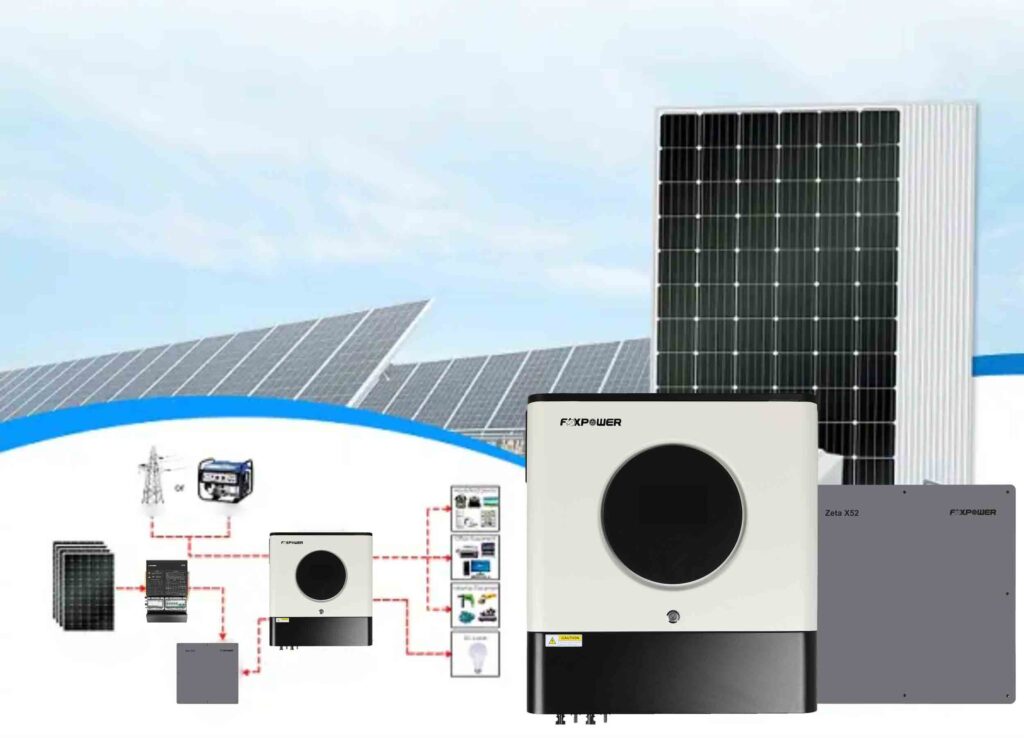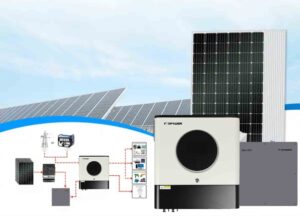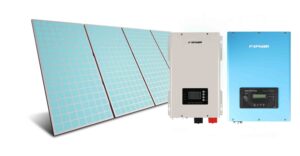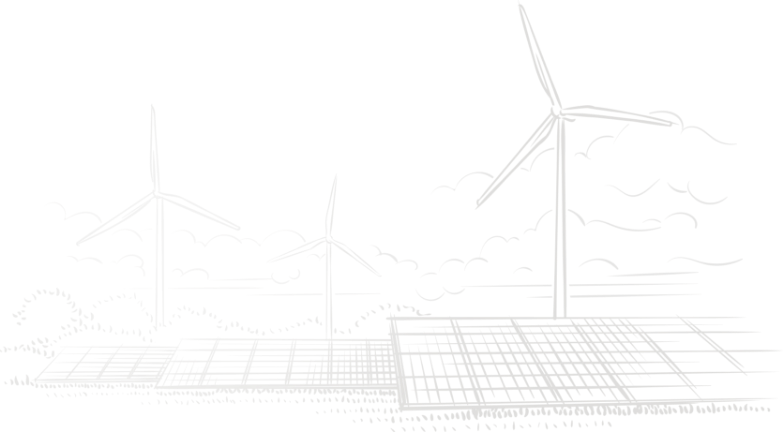As the global demand for renewable energy grows, solar power generation has become an important means to solve the energy crisis and environmental problems. In a solar photovoltaic system, the inverter, as the core component, plays a key role in converting the DC power generated by the solar panels into AC power. Inverter technology has made significant progress in recent years, and its future development prospects are also promising.
In recent years, inverter technology has made significant strides, with conversion efficiency improving from around 90% to over 98%, greatly reducing energy loss and increasing the power output of photovoltaic systems. Additionally, the development of intelligent and digital inverters has enabled features such as real-time monitoring, remote control, self-diagnosis, and fault prediction, significantly enhancing system reliability and maintenance efficiency. Furthermore, the optimization of Maximum Power Point Tracking (MPPT) technology ensures that the system operates at maximum efficiency even under uneven lighting or shading conditions. These advancements provide strong support for the widespread adoption and application of solar power generation.
- Improvement of conversion efficiency
The conversion efficiency of traditional inverters is generally around 90%. In recent years, through improved power electronics and optimized control algorithms, the conversion efficiency of modern inverters has been increased to more than 98%. This means that more solar energy can be effectively utilized, reducing energy losses and increasing the power generation of the entire photovoltaic system.
- Intelligence and digitalization
With the development of Internet of Things (IoT) and big data technology, inverters are gradually developing towards intelligence and digitalization. Modern inverters not only enable real-time monitoring and remote control, but also have self-diagnosis and fault warning functions. These intelligent functions greatly improve the reliability and operation and maintenance efficiency of the system, allowing users to discover and solve problems in time, ensuring the long-term stable operation of the system.
- Maximum power point tracking (MPPT) technology
MPPT technology is an important means to improve the efficiency of photovoltaic systems. In recent years, the MPPT algorithm of the inverter has been continuously optimized, which can more accurately track the maximum power point of the solar panel, ensuring that the system operates at the highest efficiency even when shadowed or unevenly illuminated.
- Multifunctional integration
Modern inverters are not just electrical energy conversion devices, they also integrate many more functions. For example, the inverter can have a built-in energy storage management system to achieve seamless integration of photovoltaic power generation and battery energy storage to optimize energy use. In addition, some inverters also support connection with other equipment such as electric vehicle charging piles to form a comprehensive energy management platform.
The future of inverter technology looks promising with expectations of even higher conversion efficiencies and increased power density, leading to more compact and cost-effective systems. Inverters will become more integrated with smart grids and microgrids, enabling more flexible and efficient energy management. They will also play a crucial role in distributed energy systems, smart cities, and smart homes, supporting the seamless integration and optimization of multiple energy sources. Additionally, advancements in materials and design will focus on sustainability, reducing environmental impact and promoting the long-term reliability and durability of inverters, thus driving the global shift towards renewable energy and carbon neutrality.
- Higher conversion efficiency and power density
In the future, with the further development of power electronics technology, the conversion efficiency of inverters is expected to be further improved. At the same time, through the use of new materials and new designs, the power density of inverters will continue to increase, and the size and weight will be further reduced, which will help reduce installation and maintenance costs and improve the flexibility and adaptability of the system.
- Smart grid and microgrid integration
Future inverters will be better integrated with smart grids and microgrids, enabling more flexible and efficient energy management. The inverter will be able to automatically adjust its output according to grid demand, participate in grid peak shaving and frequency regulation, and improve the overall stability and reliability of the power system.
- More diverse application scenarios
With the development of the Energy Internet, inverters will not only be used in traditional photovoltaic power generation systems, but will also play a role in more diversified application scenarios. For example, in distributed energy systems, smart cities, smart homes and other fields, inverters will become key components to support the collaborative utilization and optimized management of multiple energy forms.
- Sustainable development and environmental protection
Future inverter designs will pay more attention to environmental protection and sustainable development. By using more environmentally friendly materials and production processes, the inverter manufacturing process will reduce its impact on the environment. In addition, the high efficiency and long life of the inverter will help reduce the generation of electronic waste and promote the green development of the photovoltaic industry.
Advances in inverter technology not only improve the efficiency and reliability of photovoltaic systems, but also provide the possibility for intelligent and diversified development of future energy systems. With the continuous innovation of technology and the expansion of application scenarios, inverters will play an even more important role in future energy transformation and sustainable development. By continuously improving its technical level and expanding its application scope, inverters will help the wider popularization and application of solar power generation, promote the transformation and upgrading of the global energy structure, and make positive contributions to achieving the goal of carbon neutrality and protecting the global environment.







